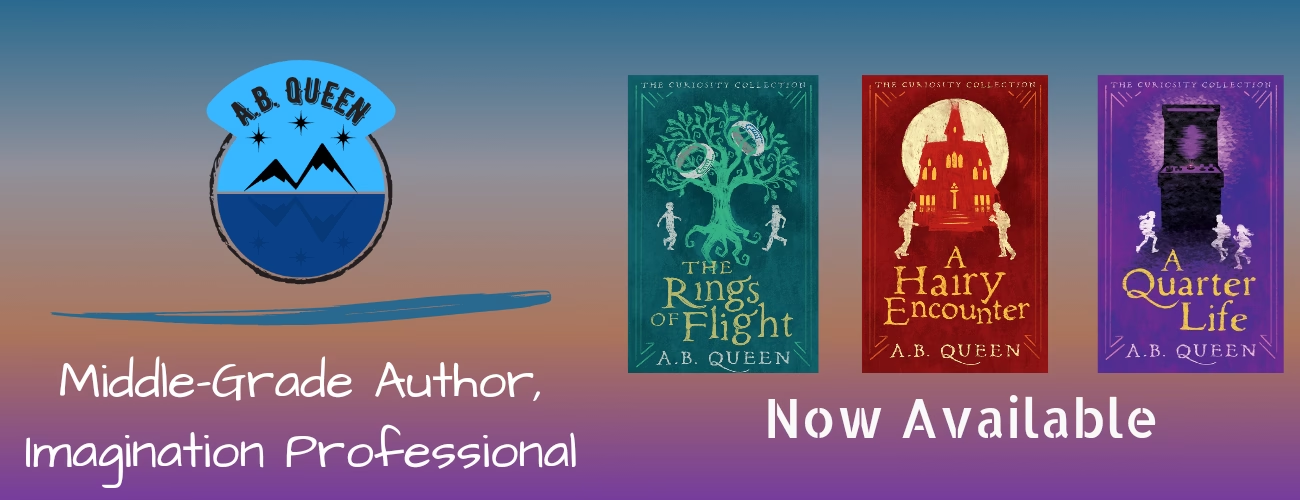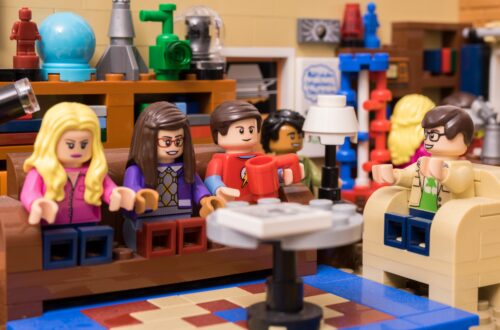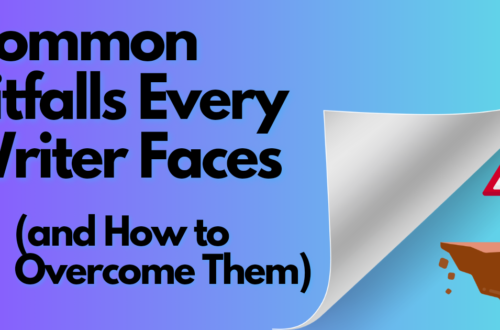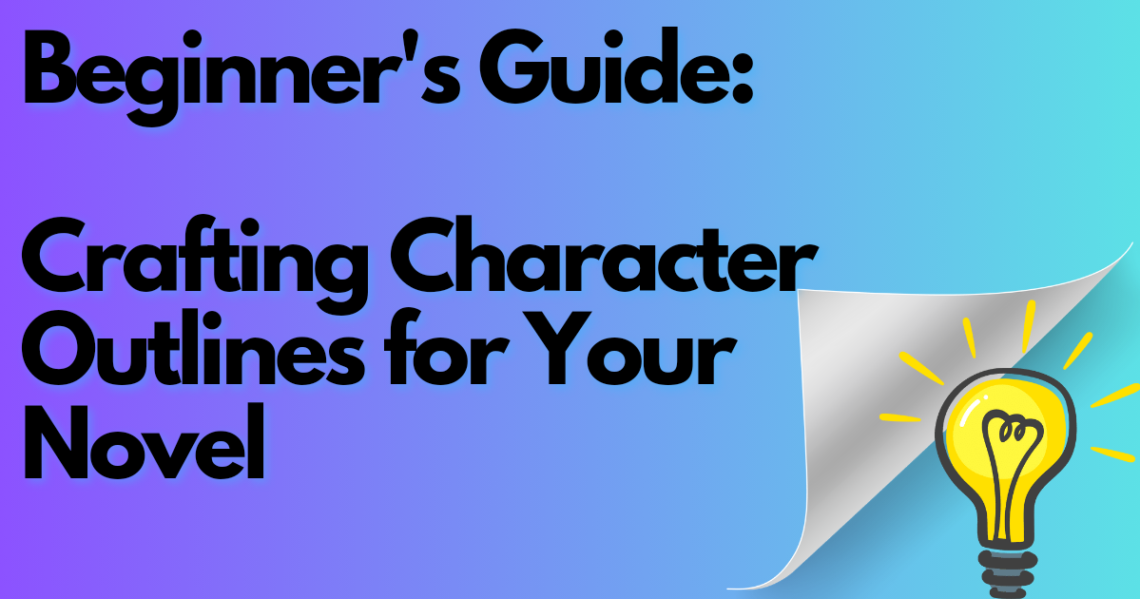
Beginner’s Guide: Crafting Character Outlines for Your Novel
Writing a novel can be a daunting task that many will attempt and only a fraction will complete. There are many components and moving parts to any story. You have the plot, settings, world-building, prose, and characters. Arguably one of the most important parts of any story. Without a compelling character, your readers may find that your story falls flat and lose interest before even finishing.
That is why I want to go over the basics of creating a compelling character profile that will lift your story and breathe life into your characters. When your characters are enjoyable, relatable, and believable, your story will flourish and evolve into a beautiful piece of work. Creating a character outline will bring depth and consistency throughout your novel, leading to fewer edits and a more satisfying story.
Rather than me going on and on about how an outline will assist your characters and story, let’s dive into the nitty-gritty of the process.
Start with the Basics
The basics are a great place to start. It gives us a sense of who they are and what they may look like.
Name
Believe it or not, the names of your characters can make or break your story. When choosing the names, you will want to make sure those names belong in the world and work well together. This comes down to understanding the genre of the book you are writing and knowing the vibe of your book.
Let’s say you are writing a high-fantasy book of elves and all of the names are elegantly crafted to fit the world, but then you decide to throw a name such as Steve or Dave in the mix (no offense meant to any Steves or Bobs out there), this can drastically pull your audience out of the world as it doesn’t fit that status. Of course, there are times when this can work when dealing with escapism and even comedy.
Now, if we use our example of an elvish high-fantasy, the significance of a character’s name can add an extra layer to your story. Understanding or creating the meaning and background of the name can bring a beautiful detail to your world-building.

I like to take the time with the names of my characters. They often have more meaning to them than most people realize. You can use baby name websites to research and add more background to the names of your characters. If you like a bit more random in your names (no shade thrown), I recommend using a name generator site.
Physical Description
The character’s physical appearance can be a fun way to explore your character. If you are a gamer, you may know how fun it can be to go into the character creation menu and create a player from scratch. Well, we writers are essentially doing this all the time, even if we don’t have it written into the story, we have an idea of what they may look like in our heads.
Outlining your character’s physical traits and body type such as height, hair, weight, eye and hair color, and even race is a great way to understand and know who you are writing about. It allows us to picture them as we write their dialogue and how they may interact with their environment.
Age, Gender, and Background
Age, gender, and background can be world-shaping for the character’s point of view and interactions. Each one strongly influences the day-to-day lives of individuals in our world, so why wouldn’t it a fictional?
Age
When thinking of the age of our character we have many things to consider: Are they the right age for the readership to relate to? Are they old enough to match the wisdom that is often associated with age? Are they young enough to be in battle? If they are immortal, how have their years shaped their lives? If they are mortal, how does your world’s society see age and treat individuals based on their age?
Many questions can be asked and many should be answered as before/while you write your story. You wouldn’t want a middle-grade book to revolve around the day-to-day life of a sixty-year-old married couple. It wouldn’t translate well to the market.
Gender
We can also use many of the same questions of gender as we did for age. Gender shapes one’s experience in the world, oftentimes more drastically than age does. Some items to think about when it comes to gender: How has their gender shaped their experiences? Does gender matter in your story? If so, just how important is it? Will your character face limits on their gender, or will they advance in their adventures due to their gender? Does sexual orientation come into play and how does that work within your world?
To get a better understanding of gender and how it shapes the world, I recommend doing a quick search on Google. You will find thousands and thousands of articles on the subject of gender and how it is seen throughout society. It can be eye-opening as an author trying to write a character within a specific gender identity.
Background
I love writing about a character’s background. It helps me feel closer to my characters and get to know them for who they are. Creating a background can help you discover this as well. It can bring out a character’s personality, interests, dislikes, family members, and heritage. All of this can bring culture and life to your story before you even put a word on the page.
This can even go as far as favorite food, favorite music, mannerisms, quirks, best friends, and least favorite places. Everything and anything to make your character feel like they are living a real life.

To build up your creative writing muscle and help with developing a background of your characters, next time you are out in public, take some time to people-watch. But, when you are people-watching, create interesting little backgrounds and pieces of information about the people you see walking about. Nothing fancy, just small talk pieces of information such as their career, favorite music, do they have kids, where were they born, where they went to college, what are their hobbies, and any other little fact you can think of. This not only helps you develop characters but pushes your creative mind just that much further.
Define the Character’s Role in the Story
Defining your character’s role is of course a crucial decision for the story. Essentially, if you don’t know their role in the story, you don’t have a story just yet. However, that’s nothing to fear as most of us will already know where the characters land and the part they play in the story.
You have three large groups of roles they will fit in. And each group will define your character and how they interact within the story.
Also, don’t be fooled by the fact that there are only three larger character types. They do split off into multiple other subgenres of the categories and aren’t as black and white as it may seem. There are endless possibilities for your character and where they land, it’s all up to you and your imagination.
Protagonist
This is your leading character or at least someone who plays a larger part in the story. An advocate of the plot of your story.
Antagonist
The characters that oppose your protagonist, usually the villain or character that interferes with your main character’s agenda.
Supporting Character
A character role that I personally love. This can be a supporting character of either your antagonists or protagonists or both if you are ambitious enough.

For a more detailed list of Character Roles, check out this wonderful article on Masterclass about the 7 different types of roles in stories.
Motivation and Goals
I recently watched a video where Brandon Sanderson talked about villains and rated them on a scale. It was four categories, ranging from Good Design and Good Character to Bad Design and Bad Character. He mentioned one of the villains not being a great character because they were evil to just be evil.
This got me thinking about the motivation of our characters and their goals. When writing a character, as a writer, we should know what drives our characters. Why is the villain hell-bent on taking over the world? Is there a purpose? What is their drive and motivation to do such a thing and how does it tie into the main story? This also goes for our “good” characters. What is their drive and motivation? What makes them get up each morning and do what they do?
These are questions that every writer should be asking themselves as they write their characters. It helps us better understand them and make them feel real to our readers. It breathes dimension and realness into the character’s life.
Explore Personality Traits
Personality traits are the next level to turn your characters into real people and provide your readers a way to tell them apart besides just the name.
Strengths and Weaknesses
As humans, hell, as creatures, we all have strengths and weaknesses. Areas in our life in which we excel, and areas that are seen as needing improvement. Providing the characters in your story these traits doesn’t need to be a main goal–such as deciding if they are the hero or villain–but is a goal worth exploring.
Let’s take a look at some literary characters in comic books. If we take Batman, Spiderman, and Superman (the big three), we can easily find all of their strengths. All three of them have genius-level intellect. Bruce Wayne has unlimited resources, and both Spiderman and Superman have superpowers when compared to humans on earth. They also have the strength to do what’s right…most of the time. And that points out just one of their flaws. They don’t always do what’s right, because they are still, at the core, human.
Batman is consumed and driven by grief, ego, and anger. Superman is a man from another world, which brings out loneliness and isolation, not to mention the pressure of always doing what’s right. Spiderman is actually just a young adult, still trying to figure out the world why carrying the weight of dead loved ones as well as how to be a “normal” human.
These contrasting strengths and flaws bring life to an individual which in turn could bring life to your story.

To build strengths and weaknesses, make a list of your favorite five heroes, villains, and supporting characters. Then, right down what are your favorite strengths and weaknesses about each character.
Core Values and Beliefs
Core values and beliefs are yet another way to have realistic characters in your story. We all have them and try to follow what we believe to be our values.
When creating your character outline, consider bringing in a list or definition of your character’s morals and values. Give them a sense of ethics to follow when they are in a dilemma. A set of morals they try to impose on others. A belief system that can’t be broken by anyone.
When you give your characters a set of morals, values, and beliefs, it gives your reader a chance to identify with them and have a reaction to their story. It doesn’t need to match our current political system, but it can follow the model of beliefs and morals that are ageless. Items such as honor, integrity, always doing what’s right, selflessness, or even selfishness. Essentially the list can go on and on with unlimited potential, but a reader will be more inclined to hate or love your characters for the right reason rather than the wrong reasons for them falling flat.
Develop the Character’s Backstory
While we have talked a bit about a character’s background, now I want to talk a bit about a character’s backstory. And you may be asking yourself “What’s the difference?”
Well, the background I like to look at as simple questions that you would answer on a first date or a polite conversation at a social gathering. Things such as:
- What do you do?
- Where are you from?
- Do you have any siblings?
- How do you spend the weekend?
You know, the basics to get to know someone. However, the backstory is where all the juice and gossip would live. It’s the events in the character’s life that would give them real definition. Stories they would only share with a loved one or a licensed professional.
Key Life Events
Key life events are critical for a successful backstory. Again, our goal is to make it believable and realistic. This would include things such as how they viewed their childhood and whether or not it was good or bad. Or maybe the traumas they experienced throughout their life that has shaped them to be the person they are today. You could even go into detail about their successes and what has brought them to where they are today.
These types of events have all shaped our own lives, it only makes sense to have them shape your story with a believable character.
The great thing about the backstory is that these can often be used in your story and aren’t just placed on a piece of paper and forgotten. uch of this can be told throughout the course of the story to bring richness to the page.
Family and Relationships
Our families and relationships can be complicated. They can be messy and strained while also being filled with unconditional love and support. As I said, they can be messy. However, we can pull from our own experience of relationships and give them to our characters for more depth.
You can do this by outlining the family dynamic and the key relationships to the characters. Maybe they have a strained relationship with their father but see their grandfather as their true father figure. Or maybe there are some twins that aren’t close but are identical in every way. These are surface-level examples, but they give the idea of how to write family dynamics. These then can be used to help decide what the character would do and what choices they would make in specific scenarios.

Open a doc, grab a journal, or a piece of paper, and think back to all of the relationships you have had throughout the years. It can be anything from a long-lasting relationship with a family member to a simple acknowledgment of greetings with someone on the elevator. Pick out some specific moments of these relationships and write down how you felt, how it shaped you or didn’t, or anything else you can think of regarding these relationships.
Understand the Character’s Inner Conflict
Another addition to your character outline is understanding the inner conflicts. If the key is realistic, and we all have inner conflicts, then it only makes sense that your character outline should include some inner conflicts as well.
Fears and Desires
Fears and desires are fantastic ways to understand your character’s inner conflicts. There is an incredible amount to choose from that can fit any type of story for any character. Take fear as an example, there are thousands of fears out there. Fears related to emotions, trauma, items, and a whole hell of a lot more.
Examples:
- Maybe your antagonist has a fear of failure and desires acceptance. This could drive your antagonist to make certain choices and be the creature that they are.
- Maybe you have a protagonist who has a fear of crowds but also a fear of loneliness. Giving them an interesting dilemma that they need to work on throughout the story.
The brilliant thing is that you are not limited to any one fear or scenario. These are your character outlines and your story, you can do whatever you want. Just takes a little bit of imagination and fun.
Emotional Journey
Emotional journeys are a story of their own. We don’t always need action, adventure, or fantasy to have a brilliant story that moves a reader. Having a character move through an emotional journey is pretty essential for most fictional pieces of literature.
When we think about our character outlines and how we can add to them, use your character’s emotional journey throughout the story. Figure out where they are at the beginning of the story, the changes and struggles they go through, and where they may end up at the end of the story.
Examples:
- Will they be overly positive and happy the entire time except for one moment when the lose it and find all hope is lost?
- Will they be an emotional rollercoaster, giving the reader zero knowledge of how the character will react to a scenario?
- Or will they be depressed and bruting for half of the story, have a turnaround in emotions and view of life before running into another scenario that spirals them back into depression?
These are just the smallest of fractions that could be seen in a novel and a character’s emotional journey.
Consider the Character’s External Conflicts
We talked about inner conflicts and ways in which a character could be struggling with themselves. Now we should talk about external conflicts. While much of these can be figured out during the novel outline, it doesn’t hurt to go through it with characters. Some of my favorite moments in my work came up due to me brainstorming on external conflicts of a character as I was writing a character outline.
Challenges and Obstacles
External obstacles can be pulled from a wide selection of scenarios. Simple scenarios in which your protagonist is confronted by the antagonist or your heroes are literally stopped by a wall or miss a train. Other external conflicts can be more subtle, such as societal norms that the character doesn’t understand, this comes in handy during espionage stories more often than you think, but it’s the fine hair that tips off the rest of the characters.
Having your characters explore and be challenged during these conflicts can push them to grow as a person while moving the story along and not feeling stale. There are a few series out there that I have read where I wished the characters learned from their mistakes. While that is most certainly a way to tell a story, it can rub the reader the wrong way if the character is supposed to be smart, self-aware, likable, and a fan favorite.

Think back to your experiences in life and remember the lessons you have learned from obstacles. Write them down and save them for a character.
How They Overcome Challenges
After you have written some of your own obstacles or thought of some for your characters, the next step is to identify how they would overcome those challenges. But more importantly, you want to make sure it aligns with many of the topics we have already talked about. Does the decision they make during the obstacle align with their morals and belief system?
Example:
- If you have a protagonist who despises weapons, but then turns around a uses them each chance they get, this doesn’t exactly line up with their belief and morals.
That may be an oversimplification, but it is something I have seen in some media.
Build the Character’s Arc
Ah, the character arc. A terrifying and daunting part of the outline, but one that could save you hours of edits and rewrites. The character arc is essentially the starting point, transformation, and end point of the character. Not only getting from Point A to Point B but how they get there.
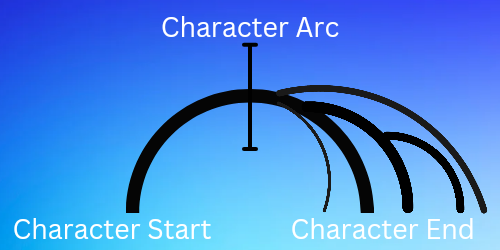
Starting Point
The starting point of a character arc is where they are at the beginning of the novel. Not necessarily their location, but mentally, emotionally, and socially. Who are they as a person at the beginning of the novel? We can think of our character as a blank canvas at this point. The canvas will be painted, but it is up to the details and actions of the character to choose which paint.
Transformation
The transformation is now taking that blank canvas and adding some paint as we move along in the story. Focusing on how the character changes as the story progresses and unfolds. Everything will lead up to the top of the arc, the climax of the story, that one crucial moment, and how the character will react. The choices they make will define the arc and how the character comes out in the end. It will define the choices going forward and the painting that we will see at the end.
End Point
The endpoint, the final product, the finished painting. All of the choices made by the characters and how they got where they are in the end. The great thing about creating a character arc is it gives you a chance to decide whether or not you like your character’s journey. If you don’t like where they end up, you know there are some places in the arc that can be altered to change the outcome.

I like to create my character arc by creating the start and how I want it to end. I will sometimes leave the middle blank. The end guides me on the decisions I want the characters to make.
Use Character Outlining Tools and Templates
As you can imagine, there are many types of character outline templates in the world. But to make it simple, I have placed one of my own creations below. A fourteen page printable character sheet that will surely get your imagination running.
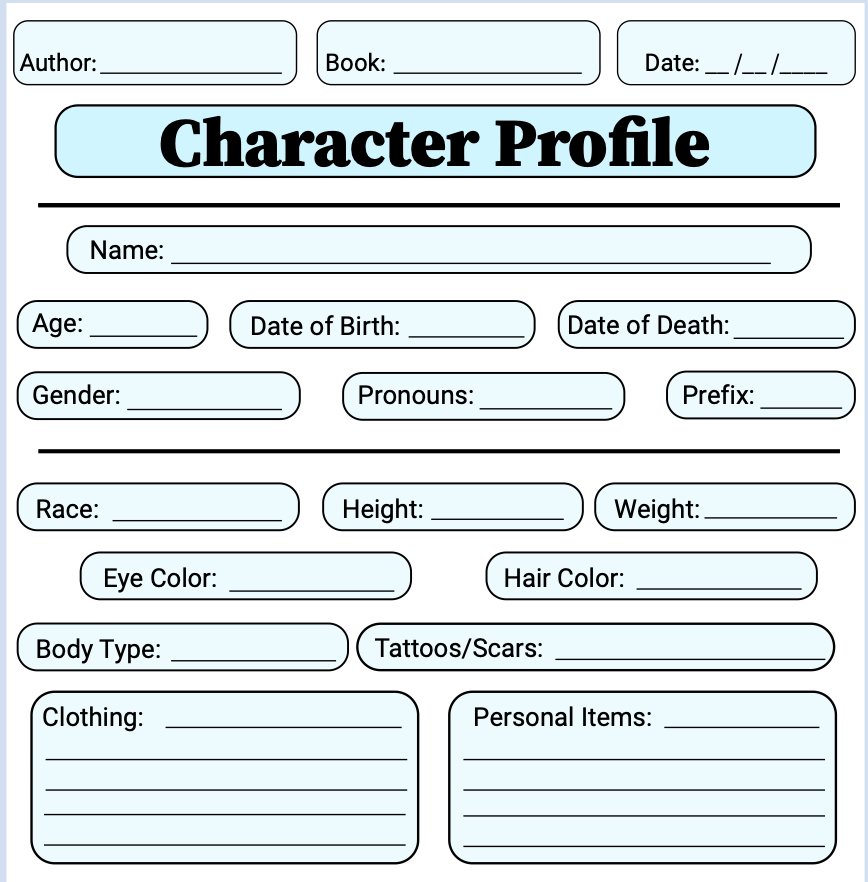
Character Interviews
Sometimes thought about as an unconventional way to create in-depth characters, but still a unique and productive way. It involves a sense of whimsy and imagination that may be out of your comfort zone. Essentially you pretend to interview your character to uncover hidden traits and pieces of information you didn’t know you wanted.
Don’t worry, you don’t need to have out loud conversations with yourself to conduct the interview. You can essentially write this all out. In fact, if you really wanted, you could create a persona for yourself and interview the character over written text. It’s a great way to get to know the character in ways you didn’t think you would.
Here is a link to an excellent Character Questionnaire to get the ball rolling.
Mind Mapping and Other Tools
You can use other tools such as mind maps, family trees, and spreadsheets to organize your character profiles and outlines. These can help take away the overwhelming feeling of taking on too much when it comes to character outlines.
Mind Map Tools
Mind Maps are a way to brain-dump your thoughts and characters onto a page. You start with a single item, such as the name or “Main Character” and branch out from there.
- A Whiteboard
- A Notebook
- Coggle (App)
Family Tree Tools
Creating a family tree can be a fun way to create part of your character’s background. There are a few tools out there to complete this if you want to create a rich background for your character.
- Spreadsheets
- A Whiteboard
- A Notebook
- Family Echo
Conclusion
We have covered a great amount today when it comes to creating a character outline. While it feels like we have covered everything, there are still numerous ways to keep building your characters and all of their details. Essentially, when in doubt, just remember that they should be thought of as real people. The more you think of them as real people, the more real they will feel to your readers.
Until Next time,
- A.B. Queen
Additional Resources
Books and Literature 📚
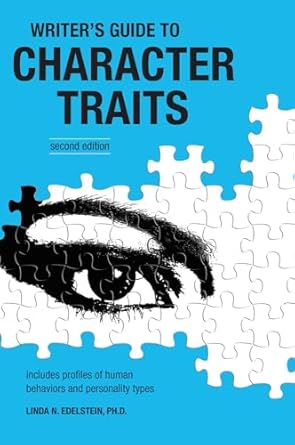
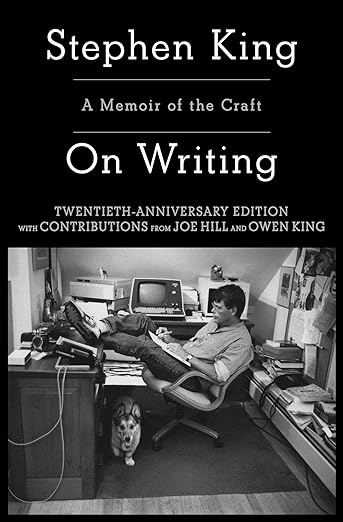
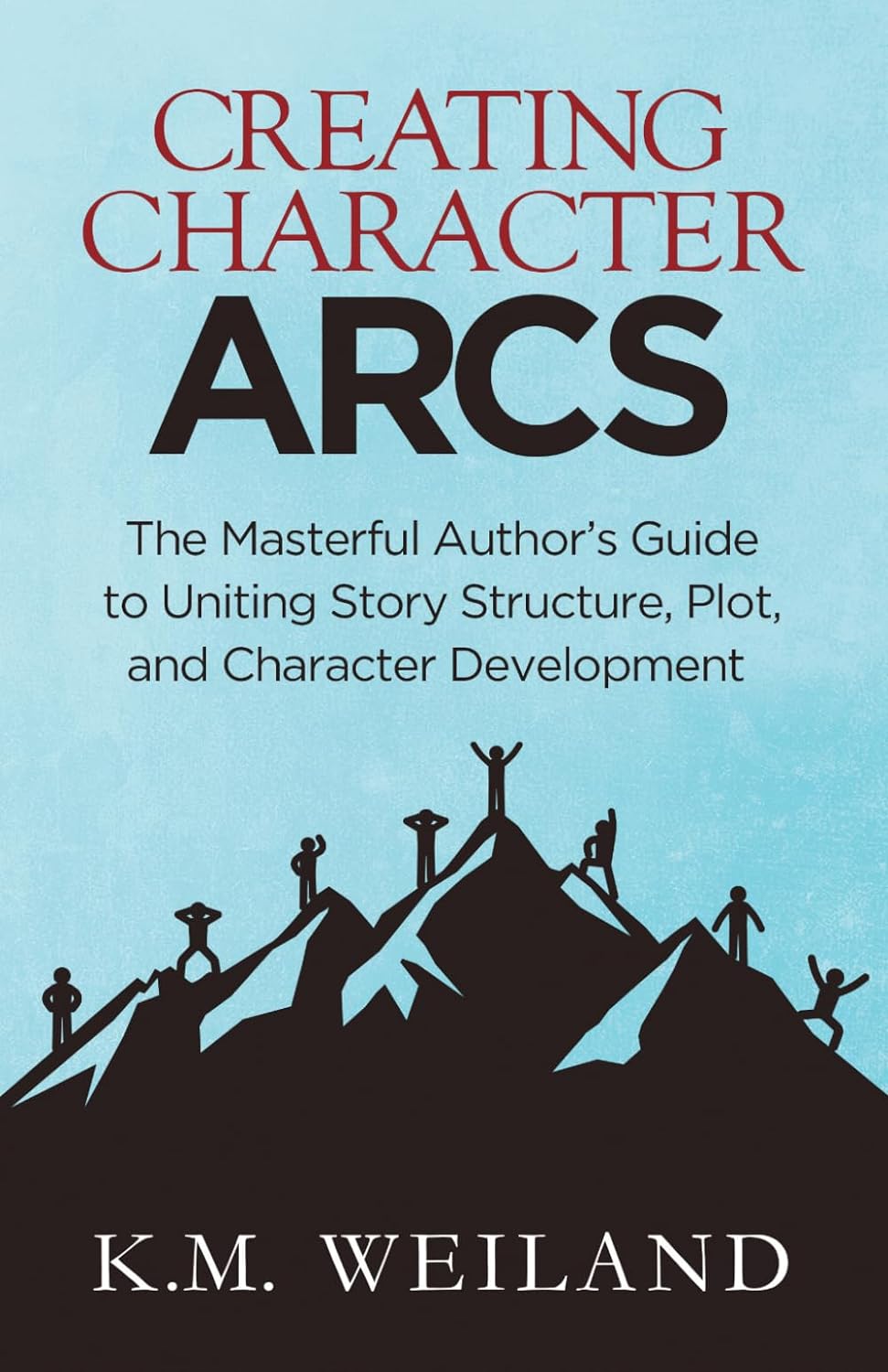
Videos 📽️
- Brandon Sanderson Lectures at BYU
- Malcolm Gladwell
Podcasts🎙️
- Writing Excuses
- Many of their episodes on Characters
FAQ
Will character outline help my work?
There is no guarantee that a character outline will improve your story as there is no right or wrong way to write and create stories. Every author has their own techniques and ways that they believe are dos and don’ts. You just need to find what works best for you.
Do I Need to Create a Character Outline?
Absolutely not. There is no hard and fast rule with character outlines and need to create them. Many authors swear by them, while others prefer not to use them. Only you can decide if they are worth your time or not.
Should I Keep My Character Outlines Up To Date?
If you like to create outlines and plan on having an extensive series, it is a good idea to keep them up to date. They can later be placed in a wiki for your fans and/or for yourself to reference when needed. This is easier than going through your previous novels to remember specific details of the character.
Does Every Character Need an Outline?
Nope. There will be characters in your work that are only briefly mentioned once with little to no detail. It doesn’t make a lot of sense to create a detailed outline for a minor character. The recommendation is to start with your main characters and possibly supporting characters and see how you feel from there and if you have the time.
Please note that links in this site contains product affiliate links. At no extra cost to you, I may receive a commission if you make a purchase after clicking on one of these links.


